Mumbai:- India’s Railway Stations are not going to be the same shortly. What remained unchanged for decades, and in some cases even over a century, is now bracing for an unprecedented transformation, as part of the Indian Railways Amrit Bharat Station Scheme. The Centre’s ambitious plan for transforming more than 1300 railway stations in the country, got further boost when Prime Minister laid the foundation stone for the redevelopment of 553 railway stations on February 26, 2024. Work on redevelopment of 508 railway stations is already in progress, whose foundation stone was laid by the PM in August last year.
The Amrit Bharat Station Scheme signifies a concerted effort by Indian Railways to modernize its infrastructure to elevate the travel experience for millions of passengers. The scheme envisages building modern passenger amenities like aesthetically designed façade, resurfaced platforms, beautiful landscaping, roof plaza, kiosks, food courts, kids play area among others. Efforts to ensure smooth access encompass widening roads, removing unwanted structures, installing well-designed signages, establishing dedicated pedestrian pathways, and enhancing parking facilities, alongside improved lighting arrangements.
One of the significant features of the Amrit Bharat Station Scheme is that the designs of redeveloped station buildings is inspired by local culture, heritage and architecture. For e.g. the Ahmedabad station draws inspiration from the Modhera Sun Temple, while Dwarka station is inspired by the Dwarkadheesh Temple. While Gurugram station will carry the IT theme, the Baleshwar station in Odisha will be designed on theme of Bhagwan Jagannath Temple. The influence of the Chola architecture will be writ large on the Kumbhakonam Station in Tamil Nadu.
Among the stations already under redevelopment, the stations at Puri is inspired by the architecture of Jagannath Temple, while the stations of Madurai and Rameswaram in Tamilnadu are inspired by the Madurai Meenakshi and Ramanathaswamy Temple respectively. The Railway station of Kotdwar typically features the Hill Station architecture, while Udaipur Station sports a dome inspired by Umaid Bhawan Palace. Delhi NCR stations like Faridabad, Ghaziabad, Safdarjang and Bijwasan sport modern look, as do the Prayagraj, Bhubaneswar, Secunderabad and Chennai Egmore. HiTech City station in Hyderabad has modern designer look while the two stations in Bengaluru- Yeshwantpur and Bengalure Cantt, display an airport like look.
The origin of the Amrit Bharat Stations scheme can be traced back to 2021, when Gandhinagar became the first Railway station to undergo modernization, replete with all modern facilities and a five star hotel. Later on in the same year, Rani Kamalapati Railway Station, formerly known as Habibganj wore a new look. In 2022, Union Cabinet approved redevelopment of 3 major railway stations, viz. New Delhi Railway Station, Ahmedabad Railway Station and the Chhatrapati Shivaji Maharaj Terminus in Mumbai, which is already a UNESCO World Heritage site.
Among the stations being taken up for redevelopment under the Amrit Bharat Station Scheme, Uttar Pradesh has the maximum number of 149 railway stations, followed by Maharashtra 126, West Bengal 94, Gujarat 87, Bihar 86, Rajasthan 82 and Madhya Pradesh 80.
Here are some of the railway stations in Maharashtra undergoing transformation.
NAME OF THE STATION – NAGPUR
PRESENT POSITION: HOW IT WILL LOOK LIKE:
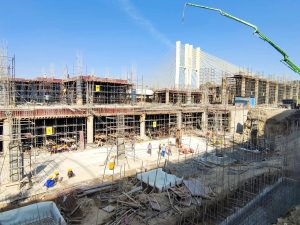
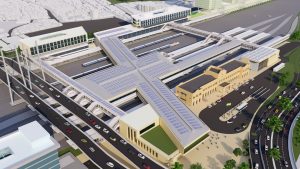
NAME OF THE STATION – SOLAPUR
PRESENT POSITION: HOW IT WILL LOOK LIKE:
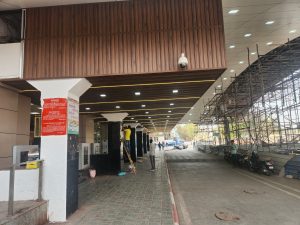
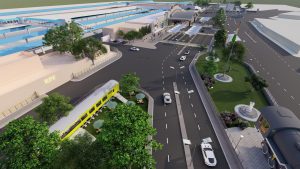
NAME OF THE STATION – AJNI , Nagpur
PRESENT POSITION: HOW IT WILL LOOK LIKE:
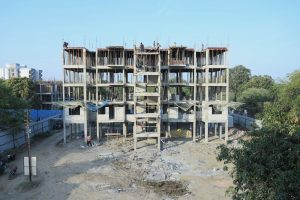
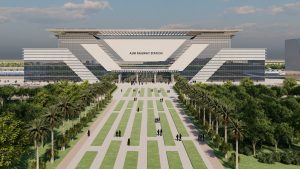
In Maharashtra a total of 126 stations are being redeveloped under the Amrit Bharat Stations Scheme. Some of the important stations are Ahmednagar, Ajni (Nagpur), Akola, Akurdi, Amalner, Amgaon, Amravati, Andheri, Aurangabad, Bandra Terminus, Baramati, Belapur, Borivali, Byculla, Chalisgaon, Chanda Fort, Chandrapur, Charni Road, Chhatrapati Shivaji Maharaj Terminus, Chinchpokli, Chinchwad, Dadar, Daund, Dehu Road, Devlali, Dhamangaon, Dharangaon, Dharmabad , Dhule, Diva, Dudhani, Gangakher , Godhani, Gondia, Grant Road, Hadapsar, Hatkanangale, Hazur Sahib Nanded, Igatpuri, Jalna, Jeur, Kalyan Jn, Kanjur Marg, Karad, Kinwat , Kolhapur SCSMT, Kopargaon, Kurduwadi Jn, Kurla Jn, Lasalgaon, Latur, Lokmanya Tilak Terminus, Lonand Jn, Lonavla, Lower Parel, Malad, Malkapur, Manmad Jn, Manwath Road , Marine Lines, Matunga, Miraj Jn, Mudkhed Jn, Mumbai Central, Mumbra, Murtizapur Jn, Nagpur Jn, Nandura, Nandurbar, Narkher Jn, Nashik Road, Osmanabad, Pachora Jn, Palghar, Pandharpur, Pune Jn, Shirdi, Sangli, Satara, Sewagram, Shegaon, Shivaji Nagar Pune, Solapur.
Aptly called the Lifeline of India, Indian Railways operates 13,000 trains daily, connecting 7,325 stations across the nation. The Railways has seen an unprecedented increase in capital expenditure in recent years and Rs 2.52 lakh crores has been earmarked for capex during the Financial Year 2024-25.


